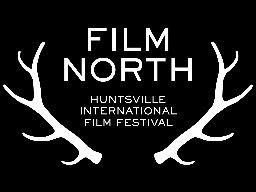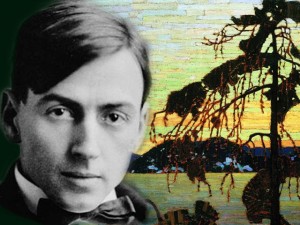A New Vision of Tom Thomson at Film North
By: Joel Irwin
 The cultural fascination with painter Tom Thomson is beyond measure – not only have his paintings become a foundation in Canadian art history, but his story and mysterious death have become the stuff of lore. Thomson has been the subject of plays, songs, poems, and even board games, and art lovers have traveled from across the world to walk in his footsteps in Algonquin Park.
The cultural fascination with painter Tom Thomson is beyond measure – not only have his paintings become a foundation in Canadian art history, but his story and mysterious death have become the stuff of lore. Thomson has been the subject of plays, songs, poems, and even board games, and art lovers have traveled from across the world to walk in his footsteps in Algonquin Park.
The risk of this cultural ascendancy, however, is a detachment from the truth that is Tom Thomson – that is, the love and passion that compelled Thomson to paint is sometimes lost in the surplus of clichés that have come to be associated with him. But every once in a while, a new perspective is created which breaks through to the heart of the story and to the man.
This is the case with “The West Wind: The Vision of Tom Thomson” a new documentary which premiered at Film North, a film festival in Huntsville Ontario. The directors, Michèle Hozer and the talented Peter Raymont, who is best known perhaps for his films, “Shake Hands with the Devil,” or “The Genius Within” bring the story of Tom Thomson to life as they explore the personal struggles and cultural forces that led Thomson to realize his greatest works of art. Beyond the gripping historical footage from the early 20th century, as well as the use of audio tapes which lends the film a haunting air of realism, “The West Wind” creates a beautiful portrait of Algonquin Park, Thomson’s muse, which allows viewers to grasp Thomson’s own conceptions of beauty and experience it for themselves.
The film also manages to balance the serene landscapes of Algonquin with the tumult of the war years, which plays a pivotal role in the documentary, as it did Thomson’s life. By contrasting these opposing forces, the drive for destruction and that of creation, the film portrays the conflicting emotions that must have plagued the artist and must have influenced the furious pace of his final works, where he completed sixty three sketches during his last spring in Algonquin Park, before his tragic end.
 The heart and soul of the film belongs to David Thomson, an avid collector of Tom Thomson’s works, who manages to describe Thomson’s paintings with such emotion and compassion that the audience feels close to something sacred, not only in Thomson’s art, but in art itself. It benefits, too, from interviews with some of the leading Thomson scholars, including Ross King, David Silcox, Joanne Murray, Dennis Reid, and Roy Macgregor, who clearly explain some of the many complexities surrounding the artist, the man, and his mysterious death.
The heart and soul of the film belongs to David Thomson, an avid collector of Tom Thomson’s works, who manages to describe Thomson’s paintings with such emotion and compassion that the audience feels close to something sacred, not only in Thomson’s art, but in art itself. It benefits, too, from interviews with some of the leading Thomson scholars, including Ross King, David Silcox, Joanne Murray, Dennis Reid, and Roy Macgregor, who clearly explain some of the many complexities surrounding the artist, the man, and his mysterious death.
There’s no denying that the “West Wind: A Vision of Tom Thomson” is an important addition to the culture of Tom Thomson, but its major success is beyond its scholarship and its well-crafted story-telling – it contains a beauty entirely of its own, a testament to the art of filmmaking.



